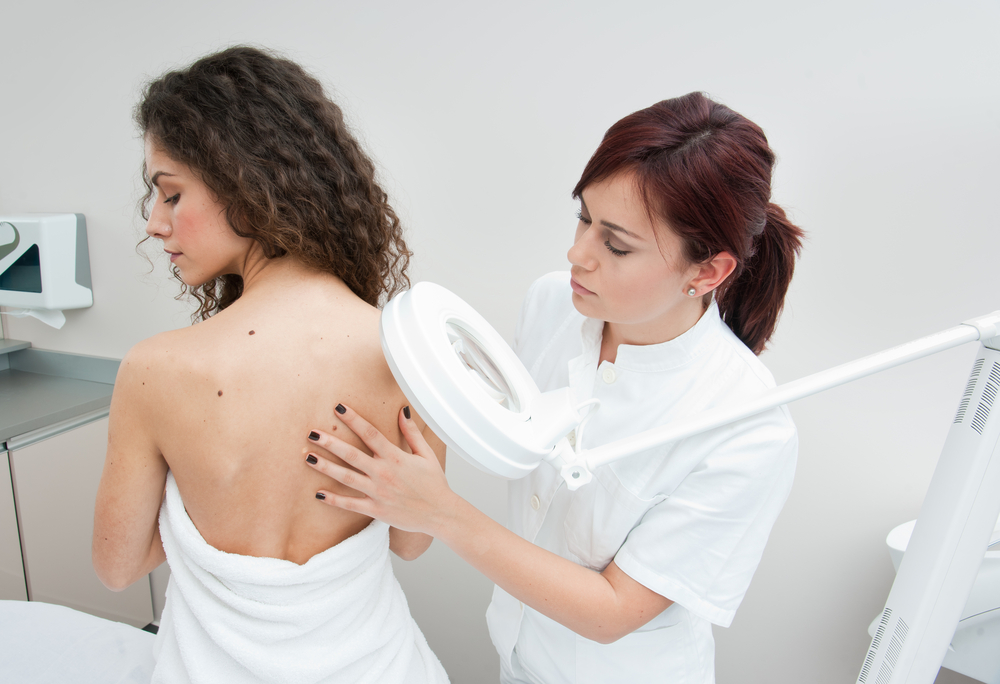If your dermatologist wants to remove mild, shallow, or benign skin cancer (or sometimes other conditions like warts), one of the most common treatments is called ED&C. Also known as electrodesiccation and curettage, this simple treatment is a way to treat superficial skin concerns with a single outpatient procedure. At Premier Dermatology and Mohs Surgery of Atlanta in Alpharetta, GA, our expert dermatologists utilize this treatment for specific types of skin conditions, typically as an early or conservative treatment for conditions that are relatively low risk.
What Is Curettage?
ED&C is a treatment that essentially scrapes and burns unwanted lesions from the surface of the skin. The curettage portion of the treatment is performed with a curette, a semi-sharp spoon-shaped instrument that gently scrapes unhealthy skin cells from the surface of the skin. After unhealthy cells have been removed, concentrated electricity will be used to burn the area; then the curette will be used again to remove any lingering cells.
Overall, the process for this treatment can be done in under an hour. The treatment process is fairly simple. After sterilizing and numbing the treatment area, the ED&C instruments will be used until all potentially cancerous cells have been removed. Then, the area will be treated with ointment and dressed. Patients will be given post-treatment instructions on how to care for the wound site. Most people are healed within two to three weeks.
When Is This Treatment Used?
Modern treatments for most skin cancers include Moh’s surgery, which has an overall better cure rate. But just because Moh’s is the most common treatment, doesn’t necessarily mean it’s the most appropriate for all types of skin cancer, particularly benign or unconfirmed cases. This treatment is best suited to using on types of cancers that are not likely to spread to other areas of the body, as well as areas where removing cancerous cells with other treatments will be possible later on.
Because of the nature of this treatment, it can be hard to assess whether or not all cancer cells are removed until several years or months have passed. ED&C treatments are typically used when dermatologists are confident a skin condition is benign since this method of treatment does not allow for monitoring of cancerous tissue.
Where Is This Treatment Used?
This treatment can be used virtually all over the body. That said, this treatment is easiest to heal from when it is used on the mid and upper body, as treatment areas on the lower body, such as the legs, may take more time to heal. Your dermatologist will only recommend this treatment if they believe it’s the best option for you and your skin condition.
What Can ED&C Treat?
Typically, this treatment is used to treat either basal cell carcinoma or squamous cell carcinoma, which are types of skin cancer that can easily be scraped from the surface of the skin. Some suspicious moles, warts, and other skin conditions can also be addressed with this treatment. This treatment can also be used for pre-cancerous skin conditions as an early conservative treatment.
How Long Does It Take To Heal?
Most of the time, people will be able to heal from this treatment in two to three weeks. The care of the treatment site is simple. During the first 24 hours, you will not be allowed to get the wound site wet; you should also avoid sweating and excessive heat. You will need to change the dressing once or twice a day and apply any ointments prescribed to you. If the treatment area is in a difficult-to-reach place, such as the back, you should arrange for help to take care of the wound.
Why Should ED&C Be Considered?
Although not as effective as Moh’s surgery in terms of cure rate for certain types of skin cancers, this treatment is still used by dermatologists because of the types of skin conditions it can treat. Superficial skin conditions do not need invasive surgery to address, so if your skin condition is appropriate, then curettage is an ideal option, particularly if your skin condition occurs on the trunk of the body.
Additionally, this treatment is a good choice if the patient is not qualified for invasive surgery. For example, if the patient is not healthy enough for a surgical procedure, this can be a good alternative treatment to slow the spread of certain types of skin cancer.
Will You Need This Treatment Again?
Skin is the largest organ in the body and skin cancer can be especially challenging to treat, regardless of whether the cancer is malignant or benign. If ED&C is used for your skin condition, there is a chance you may need to have the treatment repeated in the future if skin cancer returns in the same area or is found on another area of the skin. Only regular skin checks will be able to monitor the health of your skin to determine whether or not additional treatments are appropriate.
Be Proactive About Your Health
If you have early-stage skin cancer, superficial skin cancer, or other skin concerns, ED&C is an ideal Curettage treatment for you. This simple treatment can be completed in about one hour and only takes a few weeks to heal. Contact us Premier Dermatology and Mohs Surgery of Atlanta in Alpharetta, GA to schedule your consultation for this treatment today.

